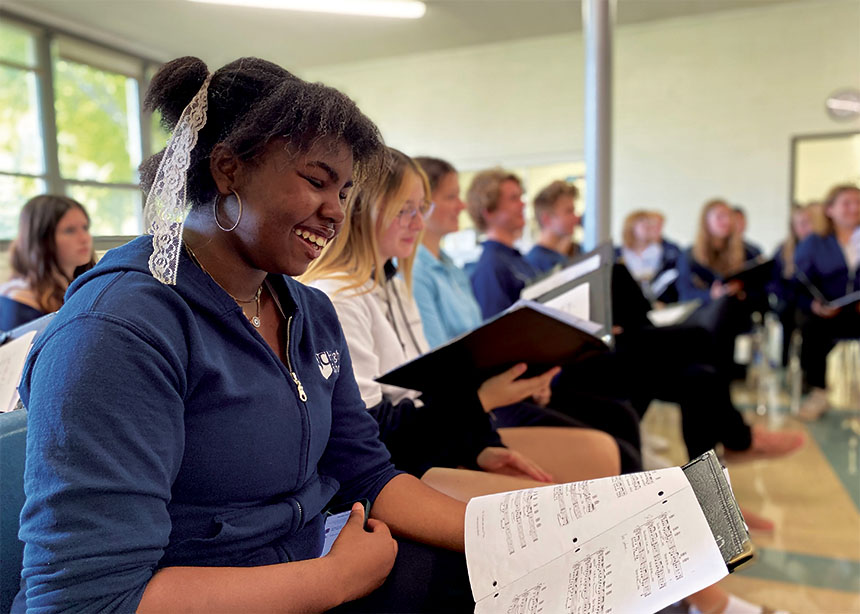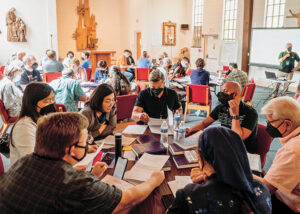Four years ago, things were looking dire for RJC High School in Rosthern, Saskatchewan. Enrollment was the lowest ever, at 65 students. It had been slowly declining for 20 years, according to Ryan Wood. Wood, who served as principal previously, is now president and CEO of RJC. “We knew that we couldn’t lose another 20 students,” he said, “We needed to grow year after year to be sustainable.”
The school surveyed parents, churches and alumni. Why weren’t they sending students to RJC? The common responses were that RJC cost too much and that people didn’t really know what RJC was about.
Swift changes were made. Tuition fees were cut in half. Money was funneled into advertising campaigns and social media. The school changed its name from Rosthern Junior College to RJC High School. The leadership chose a position of radical welcome to all who wanted to be a part of the community.
“We realized we weren’t clearly answering those basic questions for students,” said Wood. So the school said, “you’re welcome here.’’ They also embraced an identity as “a Mennonite School for the World.”
Through this rebranding, restructuring and doubling down on their Anabaptist identity, a remarkable turnaround has occurred. The school welcomed 104 students in September, the largest student population in over 15 years.
David Epp, principal of RJC, describes the feeling on campus as vibrant and energetic. Half the student body live in the school’s residence. Leadership is proud that enrollment has climbed while still being faithful to the school’s Mennonite roots. “The simplest way to describe it is that we are unabashedly Anabaptist and radically inclusive. We want to offer an education that is built on faith, service and peacemaking. And we’re seeing that that’s relevant and resonant to our students,” said Epp.
One unique feature the school offers is grade-based service projects at local organizations and organizations in other provinces. Students are encouraged to take seriously the call of Jesus to be of service to the world, said Epp.
The board of the school also changed the administrative structure. Since RJC is one of five Historical High Schools, according to provincial law, it operates as a school division with a single school. That means Wood, when he was principal, was responsible for reporting to and liaising with the education ministry, in addition to regular principal duties and strategic planning.
The size of the portfolio was too large, according to David Weiler-Thiessen, RJC’s board chair. “[Wood] was trying to fill all the roles. . . . it was just too much.” This summer, the board announced that Wood would transition to the role of president and CEO, and David Epp would assume the role of principal.
Wood says all these changes, and the charting of new territory, feels good. He’s upbeat about the future. “I’m very grateful and honored to be entrusted with this role, blessed to be surrounded by such good people. I feel really hopeful and positive about the future. Lots of people have bet against the church, and that’s a bad bet. We have to be faithful to what’s in front of us now. It’ll look different than it did in the past, but it will be alright. It’s a good thing.”









Leave a Reply
You must be logged in to post a comment.